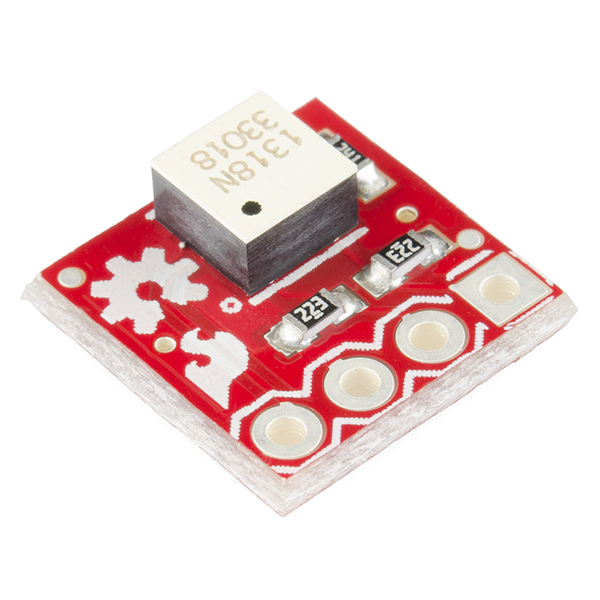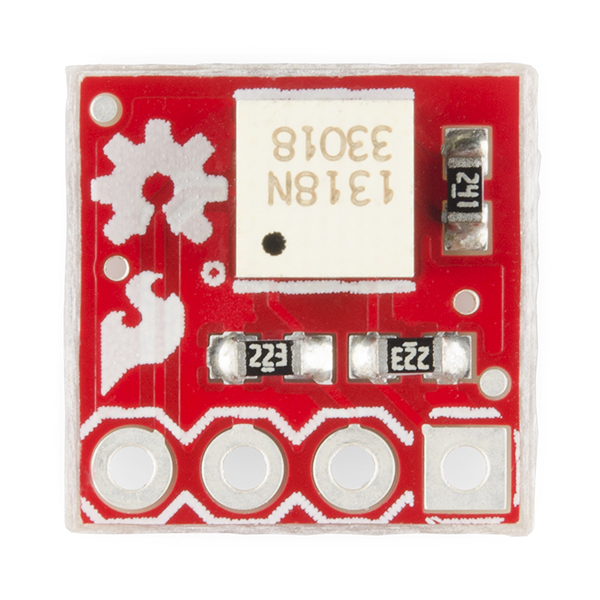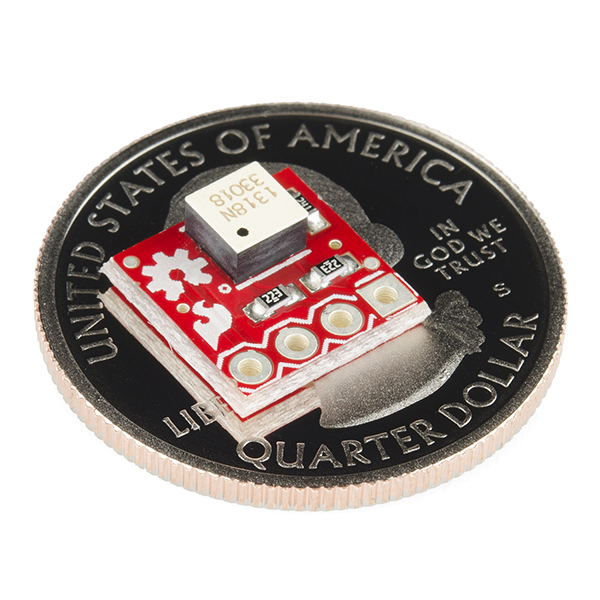SparkFun Tilt-a-Whirl Breakout - RPI-1031
The RPI-1031 tilt sensor is capable of sensing a change in orientation in four different directions: forward, back, left or right. This breakout board makes it easier to incorporate the RPI-1031 in your next project by breaking the necessary pins out to standard 0.1" spaced headers. This board will work at either 3.3 or 5V.
- Schematic
- Eagle Files
- Datasheet (RPI-1031)
- Product Page(RPI-1031)
- Hookup Guide
- bildr Tutorial
- GitHub
SparkFun Tilt-a-Whirl Breakout - RPI-1031 Product Help and Resources
Core Skill: Soldering
This skill defines how difficult the soldering is on a particular product. It might be a couple simple solder joints, or require special reflow tools.
Skill Level: Noob - Some basic soldering is required, but it is limited to a just a few pins, basic through-hole soldering, and couple (if any) polarized components. A basic soldering iron is all you should need.
See all skill levels
Core Skill: Programming
If a board needs code or communicates somehow, you're going to need to know how to program or interface with it. The programming skill is all about communication and code.
Skill Level: Rookie - You will need a better fundamental understand of what code is, and how it works. You will be using beginner-level software and development tools like Arduino. You will be dealing directly with code, but numerous examples and libraries are available. Sensors or shields will communicate with serial or TTL.
See all skill levels
Core Skill: Electrical Prototyping
If it requires power, you need to know how much, what all the pins do, and how to hook it up. You may need to reference datasheets, schematics, and know the ins and outs of electronics.
Skill Level: Rookie - You may be required to know a bit more about the component, such as orientation, or how to hook it up, in addition to power requirements. You will need to understand polarized components.
See all skill levels
Comments
Looking for answers to technical questions?
We welcome your comments and suggestions below. However, if you are looking for solutions to technical questions please see our Technical Assistance page.
Customer Reviews
No reviews yet.





I'm interested in investigating the listed applications for this device... "Digital steal camera" and "Digital handy phone" must be some new tech that I don't know about yet...
I am also interested in the Fan herater and 4 Pirection Detector. I wonder if the Pirection Detector is what was just ruled to be unconstitutional in Vermont.
Don't fear the 4 Pirection Detector, fear the person who wields such a powerful device.
I do know that you are supposed to contact your doctor if you have a Pirection lasting over four hours but beyond that...
what I am trying to do with this breakout board is to have an LED fade in and out smoothly (I already have this code working) when the tilt a whirl is reading zero but I want the LED to flicker when the board is reading the 1,2 or 3 values, any tips would be greatly appreciated.
Does anyone know the lifespan of this sensor? Is there any way I can figure out how long these sensors last?
So.. only 2 bit output, so there's no "level" state? Is has to be reporting that it's tilting one of four ways, right?
Right. It's basically intended for cameras/phones where you can do a screen or camera image orientation thing (portrait vs landscape, right side up / up side down).
I do wonder what happens if you analogread; Since it's an optical device, I can only imagine there's got to be something physical inside that blocks the IR emitter, which may mean that it can also be partially blocked, which could be detected. I doubt this would be beneficial toward detecting a 'level' state, though. Add a second one of these, add a single tilt sensor, or make the jump to a 3-axis accelerometer (both available in 'related products' below) :)
interesting for when you dont want to fork out twice as much for an accelerometer or a gyro for a simple tilt application ... of if the movement is too slow for an accelerometer would be nice to use to tell when equipment has been knocked over!
Product page link http://www.rohm.com/eu/highlights/product-news/tilt-sensor-rpi-1031.html 404 not found.
Fixed, Thank you!